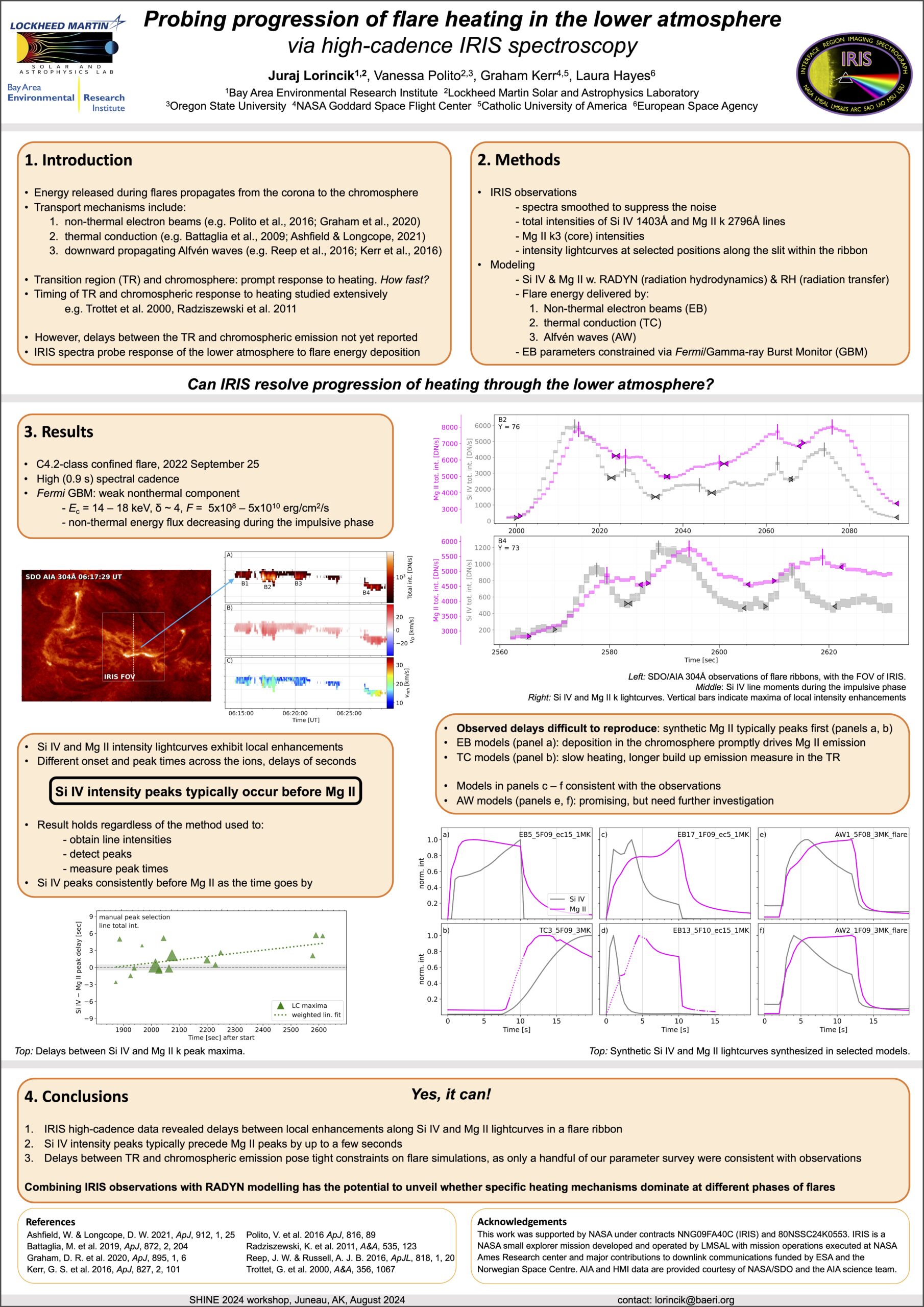Authors: J. Lorincik (BAERI/LMSAL), V. Polito (LMSAL; Department of Physics, Oregon State University), G. Kerr (NASA GSFC; Catholic University of America), L. Hayes (ESTEC)
The lower atmosphere of the Sun responds rapidly to energy deposition during flares. However, studying the time evolution of the chromospheric and transition region emission has for long been limited by time resolution of instrumentation, unable to validate modern radiative-hydrodynamic models of flare emission. High cadence flare campaigns of the Interface Region Imaging Spectrograph (IRIS) opened new avenues for studying flare energy release, transport, and deposition processes. Our analysis focuses on chromospheric and transition region spectra observed at a sub-second cadence during a C4-class flare from 2022 September 25. Intensities of Si IV, C II, and Mg II k lines observed in small-scale, dynamic flare ribbon kernels exhibited enhancements with varying peak times across the ions, with the transition region Si IV enhancements typically preceding those in the chromospheric Mg II line by a few seconds. A grid of RADYN flare simulations heated by electron beams, thermal conduction, and Alfvén waves was investigated to address the physical conditions driving the observed delays. The electron beam heating parameters were constrained by non-thermal hard X-ray observations of the Gamma-ray Burst Monitor (GBM) onboard Fermi. Reproducing the observed delays proved to be a challenge, as most of the synthetic lightcurves exhibited evolution inconsistent with the observations. Nevertheless, a selection of Alfvén wave and electron beam models produced lightcurves aligning with the observations, providing comprehensive insights into flare energetics. The delays between chromospheric and transition emission pose tight constraints on flare models and properties of energy transport.


